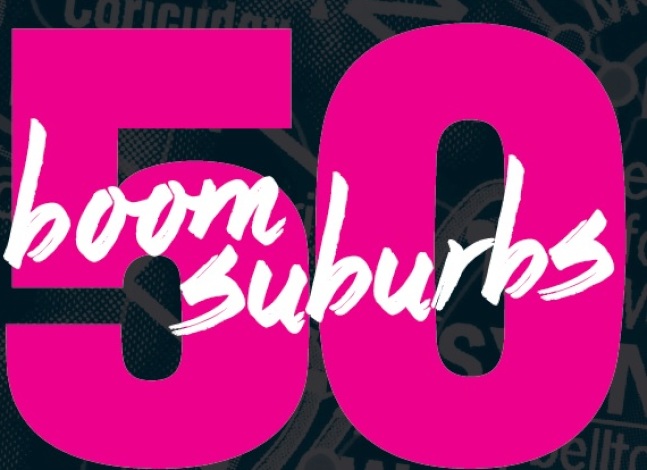50 boom suburbs

Access the Fast 50 2024 and uncover Australia's top suburbs for property investment.
Whatever happens to the ‘overall’ market, smart investors know they can prosper and succeed in all market conditions. They just need to be fore armed with the best research and analysis out there. Smart Property Investment’s Fast 50 report showcases the locations the leading experts are tipping will take off in 2015.
Many investors reject the idea of ‘hotspots’ – because as the much-espoused saying goes, once it’s being called a ‘hotspot’, it’s already too late.
Savvy investors are often hesitant to follow the crowd. Many get a kick out of hearing reports of a suburb “taking off”, knowing that they purchased in that location well before everyone else realised its investment credentials.
Smart Property Investment’s Fast 50 report doesn’t report on what’s already happened. Instead, we’ve called upon some of the industry’s leading experts to look forward and predict the areas they think will perform best for investors in 2015.
The six experts on our panel – Andrew Wilson, Louis Christopher, Margaret Lomas, Michael Fuller, Sam Saggers and Todd Hunter – are all heavily involved with property markets across the country, and their opinions and insights are respected by investors with portfolios of all shapes and sizes.
This year’s list comes at an interesting time for property investors.
2014 saw many investors expand their portfolios, increase their equity and ultimately improve their bottom line. Indeed, last year, it was hard to escape stories about rising prices, changing affordability dynamics and the investor buying bonanza.
It wasn’t all good news, however. The level of activity didn’t just catch the attention of the media and commentators – but regulatory bodies and politicians as well. 2014 may have been the year of the investor, but a fair amount of blame was thrust their way.
All at once, investors were accused of forcing up prices, keeping would-be first-time buyers out of the market and over-exposing themselves to debt in the record-low interest rate environment – which could affect the country’s financial stability when the cash rate inevitably rises again.
In addition, the future of negative gearing was debated, there were suggestions about lenders charging more on investor loans to “rebalance” the market, and the discussion about the impact, risks and future of foreign investors in Australia continued.
As the year rolls on, experts and commentators are divided about what will happen to prices beyond 2015. In December 2014, CoreLogic RP Data head of research Tim Lawless said Sydney would move towards a more sustainable rate of growth in 2015.
“Housing market conditions [in Sydney] have been nation-leading over the current cycle, with dwelling values up by 31 per cent to date,” he said at the time. “The rate of capital growth is slowing down, though, after the annual rate of growth peaked in April last year [2013] at 16.7 per cent.
“We expect the trend towards a more sustainable rate of capital gain to continue over 2015, due to national affordability constraints … as well as a reduction in investor demand, which will likely be attributable to the lowyield environment, as well as tougher investment lending requirement from the banks.”
Whilst many commentators agree that the best of Sydney’s growth may be behind us, others have raised concerns that the over-activity and hype could end up harming prices in the long run. Speaking at the launch of Genworth’s Home Grown report in November 2014, Paul Bloxham, chief economist at HSBC Australia and New Zealand, said investor activity in Sydney was becoming “a bit frothy” and warned that Australia’s largest city faced a price correction if current growth levels continued.
“We’re up 28 per cent over the past two years in terms of house prices, and investors account for 45 per cent of all new lending that’s going on in the Sydney market,” he said. “That’s a higher level as a proportion of the total number of loan approvals than we saw back in 2003 or so, when we saw Sydney have a house price rise and then a house price fall.”
Despite this chatter, all investors know that ‘Sydney’ isn’t simply one big property market, and savvy buyers can prosper in most market conditions.
This is reflected in this year’s list, with New South Wales once again dominating. The state accounts for 21 of the 50 suburbs this year (interestingly, the same number as last year).
Queensland was our experts’ second most popular state, with 13 suburbs making the cut. Western Australian suburbs appear six times, compared to 10 last year, and Victoria four – a repeat of 2014.
2015 could see investment activity in Tasmania pick up – with four suburbs on the Fast 50 list compared to zero last year. No suburbs from the territories made it this year, or indeed last year.
Obviously no list is foolproof, but we’ve provided as much information as possible to help you understand why the experts believe these suburbs have strong growth fundamentals. The list is certainly not intended to be a buyer’s guide (and you may not agree with every selection), but the data we’ve provided, as well as each expert’s reasoning for their selections, should give you an insight into how professionals pick their next locations.
Smart Property Investment would like to thank Andrew Wilson, Louis Christopher, Margaret Lomas, Michael Fuller, Sam Saggers and Todd Hunter for their assistance in compiling this report.
NSW investment suburbs for 2015
Victoria investment suburbs for 2015
Queensland investment suburbs for 2015
South Australia investment suburbs for 2015
Tasmania investment suburbs for 2015
Western Australia investment suburbs for 2015